Creative Methods in Online Qualitative Research
Design studies that invite meaningful - and colorful - interactions with participants.
The September newsletter is dedicated to exploring the potential for visually-oriented creative methods in qualitative research with human (!) participants. Throughout the month I’ll share additional posts with how-to tips for using these approaches, including criteria for selecting tools and platforms. In October the newsletter will look at methods for finding visual or aural data in online archives. While my focus is on scholarly research, many of these principles apply to research for journalism, business, and other types of inquiry.
Let’s reflect on all the forms of human expression. We use words in speech and in writing. We get messages across non-verbally with facial expressions and movements. We use numbers to count and measure. We sing and play musical instruments. We draw and paint, take photographs, films and videos. We make things, from cakes to quilts. Why should limit research communications with participants by solely focusing on the domain of words when we craft interview questions? I love this quote from Michael Pryke:(Pryke, 2003)
Questions, after all, raise some profound issues
about what kind of knowledge is possible and desirable,
and how it is to be achieved.
For example, do all questions have to be made in words?
To the first issue, yes, we want to explore many ways of knowing in order to understand the complexities and cultural contexts important to the problem we are studying.
To the second question Pryke raises, I would answer a resounding no. Questions and prompts can be communicated in ways that go beyond words. In this post we will look at visual ways to explore ways of knowing and understanding the phenomena central to the study.
Our online conversations, whether private or public, often revolve around photographs or media. We snap a picture and attach it to a text message: let me show you what I see. We comment on a video we see on a social media site: this story resonates with me. We use the visual mode to build a sense of presence: you can’t be here to see my baby, this beautiful sunrise, or this pile of books I just bought, but we feel closer when we see the same images. We want to share something about the people, the places, and/or the ideas that are important to us. Details, context, colors, facial expressions, relationships, would take time to describe and even then, words might miss something important. My Substack friend Nishant Jain put it so well in a recent
:[Drawing] is articulation of thought but outside of words. The process of drawing - from sight and perception to representation - can play itself out without a single word getting in the way.
Art is more accessible because art can communicate outside of language. It is a shortcut to thoughts and experiences that are sometimes gatekept behind education, erudition, and other heavy words.
In our modern text-driven culture, drawings and art occupy a special place. They help you temporarily disconnect from the business of interpreting the politics of language. They take you outside the boundaries of your own vocabulary.
So… we can go beyond the limitations of vocabulary and language when we ask questions with images, including photos or video, artwork or artifacts, and invite participants to respond in visual ways. Of course we still need words, but when we mix it up the exchange is richer and more engaging.
Let’s dig in, using the Typology of Online Visual Interview Methods (Salmons 2016, 2022) to think about the kind of online interaction(s) we want with participants, and ways to go beyond a simple Q & A-style interview.
Typology of Online Visual Interview Methods
What creative affordances are available in modern ?
The advent of smartphones means many people carry cameras with them at all times. Four main types of visually oriented interactions are available to researchers and participants who use the Internet to communicate. We can easily use email or messaging tools to transmit visual images. Researchers and participants can send each other image or media files, links to images posted on a server or website, or snapshots captured in the moment. In addition to sharing images, we can view visual representations of phenomena together. We can look at and discuss photos, graphics, artifacts, or media on a shared screen during the interview. Third, in addition to viewing images on videoconferencing platforms, researchers and participants can use shared applications and immerse themselves to navigate through visually rich games, maps, videos, or virtual environments. Finally, we can use shared whiteboards to create visual images. With collaborative image-making the researcher and the subjects work together to represent the phenomena of interest by creating or annotating images.
How can we use these affordances to collect research data?
There are three main ways researchers make strategic use of visual exchanges in data collection activities: communication, elicitation, and creation.
Visual communication: “The world told is a different world to the world shown.” (Kress, 2003)
We communicate visually to reveal abstract concepts, relationships between concepts or data, or examples of research phenomena. A visual representation of the research phenomenon through pictures, media or graphics can convey details it would take many words to explain. Visual representations of some aspects of the research phenomena can be generated by the researcher, by the participant, or obtained from other sources.
One way to think about using visual methods as a communication medium is to distinguish between whether you want to use visuals to serve as the stimulus or response. When researchers ask questions or introduce themes, they hope to stimulate a fruitful response from the participants. While interviews generally use a verbal stimulus to produce a verbal response, visual communication allows for a wider range of possibilities. A question posed verbally can be answered by the participant who draws a diagram or shares a photograph. A visual representation of the question can be answered with a visual, text and/or a verbal response.
Visual Elicitation: 'What do these images, media, or artifacts mean?'
The general term visual elicitation is used here to encompass the introduction of any kind of visual material into the interview, including photographs, videos, drawings, artwork, diagrams, or graphics. Visual representations of some aspect of the research phenomenon can be generated by the researcher, by the participant, or obtained from extant or other sources. Elicitation in this context refers to interviews or research events that use visuals to elicit responses and stimulate discussion about participants’ experiences of the research phenomenon. When you elicit data by questioning participants, you expect them to recall their experiences and be able to represent them in responses. You hope that their explanations are full and that they have not excluded details they've forgotten or are reluctant to share. With visual elicitation, participants are asked open-ended questions about visuals that depict some aspect of the phenomenon being studied. Prompting a participant with ‘tell me about this photograph,’ for example, shifts the locus of meaning away from descriptive representations of objects, places, people, or interactions. Instead, images gain significance through the way that participants engage and interpret them.
Researchers who want to use visual elicitation must of course decide what visuals fit the study. There are two primary options, and naturally, each has pros and cons:
Images from the researcher: The researcher can take or find photographs of the aspects of the phenomena they want to discuss. The advantage is that the researcher owns the rights, seeks permission, or selects royalty-free images and can thus use the photos in publications or presentations without revealing participants’ identities. The researcher will use them in a semi-structured style of interview: the same photos are used in all interviews, providing continuity across the study. The disadvantage is that participants might not identify with or relate to the photographs.
Images from the participant: The researcher invites the participants to generate photographs on a topic or in response to a prompt. Participants can submit the photos in advance of the interview or share them during the interview. The interview style is less structured, since each participant discusses their own photos, meaning each interview will be unique. The advantage is that the photos are personalized to the participants’ experiences and perceptions, so will likely generate a rich discussion. The disadvantage is that when photos contain images of the participants and other people, they cannot be used in publications without jeopardizing anonymity.
Creation of Visuals during the Interview: “I can show you!”
Visual collaboration refers to a collaborative approach to either stimulate new thinking or create representations of the research phenomena. Shared tools or whiteboards allow researchers and/or participants to create drawings, diagrams or visual maps, snapshots or videos as part of the research event. While we are exploring the ability to generate images online, researchers and participants can create or find and share physical drawings, journals, or artifacts. Visual collaboration represents a focus on the online research setting, the milieu where researchers and participants meet to generate visual representations of experiences or perceptions of the phenomenon. Settings are chosen that allow researchers and participants to create, edit, or embellish images together during the research event.
Tips for Planning a Creative Online Interview
While the approaches described here can be used in a variety of ways, videoconferencing types of platforms lend themselves to this kind of visual interaction. These platforms integrate text and video chat functions with various combinations of tools that may include shared applications and shared whiteboard. How will visual, verbal, and/or text options be utilized? What communication features are suitable given the purpose of the study and participants’ digital literacy? Which will you use to convey questions or prompts, and what participatory options will to offer interviewees?
If you are planning an elicitation interview, you will need to decide whether to produce images or media to use as stimuli or whether to ask participants to take photos or create artwork to share in a photovoice-style study.
The entire videoconference interaction is captured and archived, thus providing a data record for the researcher to review and analyze. I suggest that you record to your own computer, rather than the cloud, so you can control access and protect the data. Future posts will explore issues related to selection of platforms in more detail.
For more on these and other design considerations, see Doing Qualitative Research Online (2022).
Pryke, M. (2003). Using social theory: Thinking through research. GBR: Sage Publications.
Salmons, J. E. (2022). Doing qualitative research online (2nd ed.). Sage Publications
Suggestions for Reflection, Discussion or Classroom Exercises
Do you think in words or pictures? What style of communication is natural for you, and how does it impact your inclinations and abilities as a researcher?
Think of a time when someone successfully used visual approaches to communicate with you. Describe the experience and identify why the message got through to you by a visual means.
Review an article or report of a study based on a typical interview that used verbal or written questions. Develop an alternative data collection plan using online visual interview methods. What rationale supports your choices?
Identify a platform you are interested in using for an online interview. Review the specific options available for communicating, how you would use them, and steps you would take to prepare. Determine whether you will be able to protect the data by recording to your own hard drive.
How would you prepare for a visual exchange with research participants? Create a planning checklist for visual interview preparation.
Conduct a practice online interview using visual research methods with a friend, colleague, or fellow student.
Using the same interview questions, experiment with different combinations: verbal stimulus/verbal response; verbal stimulus/visual response; visual stimulus/verbal response; and visual stimulus/visual response.
Compare and contrast the ways you communicated and the kinds of results you obtained.
Based on this exercise, what kinds of questions elicit the richest responses
Relevant Open Access Articles
Bailey, K. A., Dagenais, M., & Gammage, K. L. (2021). Is a Picture Worth a Thousand Words? Using Photo-Elicitation to Study Body Image in Middle-to-Older Age Women With and Without Multiple Sclerosis. Qualitative Health Research, 31(8), 1542–1554. https://doi.org/10.1177/10497323211014830
Abstract. In this study, we explored how women with varying relationships to disability and aging used photographs to represent their body image experiences. Seven middle-aged and older adult women with and without multiple sclerosis were asked to provide up to 10 photographs that represented their body image and complete a one-on-one interview. We used reflexive thematic analysis to develop themes and interpret the findings. Overall, the women expressed not only complicated relationships with their bodies, represented through symbolism, scrutiny of body features (e.g., posture, varicose veins, and arthritis) but also deep reflection linked to positive body image and resilience. These findings revealed not only the nuanced experiences women have with aging, disability, and gender but also the commonly experienced ingrained views of body appearance as each participant illustrated a difficult negotiation with the aesthetic dimension of their body image. Finally, we provide important implications of the use of visual methods in body image research.
Burles, M., & Thomas, R. (2014). “I Just Don’t Think There’s any other Image that Tells the Story like [This] Picture Does”: Researcher and Participant Reflections on the Use of Participant-Employed Photography in Social Research. International Journal of Qualitative Methods, 185–205. https://doi.org/10.1177/160940691401300107
Abstract. The incorporation of visual forms of expression has become common in qualitative research over the past two decades, with participant-employed photography being most prevalent. Visual methods such as photovoice have been used in community-based studies and with individuals to explore their lived experiences, particularly because of their participatory nature. Despite widespread support for visual approaches in existing research, there has been insufficient attention paid to how photography can enhance understanding of the phenomenon under study. Additionally, the existing literature is somewhat bereft of discussion of what individuals think about their participation in studies that incorporate participant-employed photography, or researchers' perspectives of carrying out this type of research. In this article, we describe a photovoice study carried out with young adult women affected by serious illness and provide examples of participants' photographs to illustrate how participant-employed photography can enhance the depth of research data. Specifically, the examples highlight how the photographs enriched participants' verbal descriptions of their lived experiences, which generated a better understanding of their personal embodied realities. We also discuss the young adult women's inclusion of previously taken photographs and reflections on their participation in the study. Finally, we examine the need to consider the intended audience of photographs, and specific ethical and methodological considerations for researchers contemplating the incorporation of participant-employed photography. In doing so, we provide insight into the advantages and challenges of photo-methods, which can inform other researchers contemplating the incorporation of participant-employed photography into social research.
Epstein, I., Stevens, B., McKeever, P., & Baruchel, S. (2006). Photo Elicitation Interview (PEI): Using Photos to Elicit Children’s Perspectives. International Journal of Qualitative Methods, 5(3), 1-11. https://doi.org/10.1177/160940690600500301
Abstract. When conducting photo elicitation interviews (PEI), researchers introduce photographs into the interview context. Although PEI has been employed across a wide variety of disciplines and participants, little has been written about the use of photographs in interviews with children. In this article, the authors review the use of PEI in a research study that explored the perspectives on camp of children with cancer. In particular, they review some of the methodological and ethical challenges, including (a) who should take the photographs and (b) how the photographs should be integrated into the interview. Although some limitations exist, PEI in its various forms can challenge participants, trigger memory, lead to new perspectives, and assist with building trust and rapport.
Glaw, X., Inder, K., Kable, A., & Hazelton, M. (2017). Visual Methodologies in Qualitative Research: Autophotography and Photo Elicitation Applied to Mental Health Research. International Journal of Qualitative Methods, 16(1). https://doi.org/10.1177/1609406917748215
Abstract. Visual methodologies are a collection of methods used to understand and interpret images. These methods have been used for a long time in anthropology and sociology; however, they are a relatively new way to research for the majority of disciplines, especially health research. Two effective visual methodologies that could be used in health research are autophotography and photo elicitation. Autophotography is asking participants to take photographs of their environment and then using the photographs as actual data. Autophotography captures the world through the participant’s eyes with subsequent knowledge production. Photo elicitation is using photographs or other visual mediums in an interview to generate verbal discussion to create data and knowledge. Different layers of meaning can be discovered as this method evokes deep emotions, memories, and ideas. Photo elicitation interviews contribute to trustworthiness and rigor of the findings through member checking.
Kyololo, O. M., Stevens, B. J., & Songok, J. (2023). Photo-Elicitation Technique: Utility and Challenges in Clinical Research. International Journal of Qualitative Methods, 22. https://doi.org/10.1177/16094069231165714
Abstract. Photo-elicitation interview techniques, a method in which researchers incorporate images to enrich the interview experience, have been gaining traction in numerous spheres of research over the last two decades. Little is, however, written about the utility of the technique in studies involving vulnerable populations in clinical contexts. Drawing on research where researcher-generated photographs were used to elicit mothers’ experiences of pain and perceptions about use of pain-relieving strategies in critically ill infants, we aim to demonstrate (a) how the method can be used to generate harmonized and detailed accounts of experiences from diverse groups of participants of limited literacy levels, (b) the ethical and methodological consideration when employing photo-elicitation interview techniques and the (c) possible limitations of employing photo-elicitation interview techniques in clinical research.
Marshall, A. N., Walton, Q. L., Eigege, C. Y., Daundasekara, S. S., & Hernandez, D. C. (2023). Comparing In-Person and Online Modalities for Photo Elicitation Interviews Among a Vulnerable Population: Recruitment, Retention, and Data Collection Applications. International Journal of Qualitative Methods, 22. https://doi.org/10.1177/16094069231205794
Abstract. The purpose of the current study was to use Orsmond and Cohn’s feasibility framework to compare two methods of collecting photo elicitation interviews: (1) in-person and (2) online among low-income community college students. We described the feasibility of the recruitment and retention procedures and compared the participants’ characteristics and the type of data obtained by data collection modality. Focus group participants (n = 34) were invited to participate in photo elicitation interviews regarding barriers to food access and associated material hardships. Prior to the pandemic, photo elicitation interviews were conducted in-person. Due to pandemic-related stay-at-home policies, photo elicitation interviews shifted to a video conferencing platform. Descriptive and bivariate analyses were used to compare the two data collection methods in terms of sample characteristics, the average length of each interview, and the number and type of photos submitted. Of 34 recruited participants, 28 participated in photo elicitation interviews (82.4% response rate; n = 13 in-person; n = 15 online) with a mean age of 39.75 years (range: 19–62). No significant differences were found in socio-demographic characteristics between interview modality groups. In both online and in-person photo elicitation groups, participants were more likely to be female, non-Hispanic Black, single, and unemployed. Overall, both modalities were found to be feasible to recruit and retain participants and collect data from low-income, community college students. We found similar data in terms of photographs, and similar codes and themes were generated from the interview data across both modalities. Using both modalities provided an opportunity to promote equity in research through inclusion of hard-to-reach populations who may experience barriers to participation such as transportation or childcare. This study can inform recruitment and retention efforts for quantitative and qualitative research, and data collection efforts for photo elicitation interviews. The lessons learned are critical to generating rich data and advancing research conducted among vulnerable populations.
Platzer, F., Steverink, N., Haan, M., de Greef, M., & Goedendorp, M. (2021). The Bigger Picture: Research Strategy for a Photo-Elicitation Study Investigating Positive Health Perceptions of Older Adults With Low Socioeconomic Status. International Journal of Qualitative Methods, 20. https://doi.org/10.1177/16094069211040950
Abstract. Research focussing on older adults of low socioeconomic status (SES) faces several methodological challenges, including high rates of non-response and drop-out. In addition, older adults of low SES tend to be less willing to participate in research and are more likely to experience cognitive impairments and literacy problems. Photo-elicitation studies do not require high levels of literacy, and they might therefore be suitable for use in research with older adults of low SES. To date, however, little is known about setting up such studies with this target group. Our aim was to demonstrate how we systematically set up a researcher-driven photo-elicitation study to generate greater insight into the positive health perceptions of older adults of low SES. Our strategy consisted of three phases: development, testing and execution. In this article, we discuss each step of the research strategy and describe the limitations and strengths of our study. We also formulate recommendations for further research using photo-elicitation methods with this target group. Based on the results of this study, we conclude that the use of researcher-driven photo-elicitation is a powerful tool for enhancing understanding with regard to positive health perceptions and experiences of older adults of low SES. The usefulness of the method is particularly dependent on the careful development and testing of the study.
Poku, B. A., Caress, A.-L., & Kirk, S. (2019). The Opportunities and Challenges of Using Photo-Elicitation in Child-Centered Constructivist Grounded Theory Research. International Journal of Qualitative Methods, 18. https://doi.org/10.1177/1609406919851627
Abstract. In the last three decades, there has been a growing interest in listening to children’s voices in child health research. Ensuring an appropriate level of dialogical engagement with children calls for participatory methods. Auto-driven photo-elicitation interviews (PEIs) are a powerful approach to obtain rich data from children. This article discusses the opportunities and challenges of using auto-driven PEIs in a health-related child-centered constructivist grounded theory study conducted in a poor-resourced country. Our experience shows that while the approach is effective for facilitating co-construction of data with children and for addressing the ethical and methodological issues associated with child-centered research in the context of a developing country, it is narrow on its own. Broadening the term to “picture-elicitation interviews” to allow for the inclusion of other forms of images would make the method more adaptable and inclusive. This would give children the flexibility of choosing pictorial options that best suit them and also help child participants and researchers address the practical and cultural challenges associated with the use of auto-driven PEI in a poor-resourced country.
Raby, R., Lehmann, W., Helleiner, J., & Easterbrook, R. (2018). Reflections on Using Participant-Generated, Digital Photo-Elicitation in Research With Young Canadians About Their First Part-Time Jobs. International Journal of Qualitative Methods, 17(1). https://doi.org/10.1177/1609406918790681
Abstract. Participant-generated photo-elicitation usually involves inviting participants to take photographs, which are then discussed during a subsequent interview or in a focus group. This approach can provide participants with the opportunity to bring their own content and interests into research. Following other child and youth researchers, we were drawn to the potential of participant-generated photo-elicitation to offer a methodological counterweight to existing inequalities between adult researchers and younger participants. In this article, we reflect on our use of one-on-one, participant-generated photo-elicitation interviews in a Canadian-based research project looking at young people’s earliest paid work. We discuss some of the challenges faced when it came to gaining institutional ethics approval and also report on how the method was unexpectedly but productively altered by participants’ use of publicly accessible Internet images to convey aspects of their work. Overall, we conclude that participant-generated photo-elicitation democratized the research process and deepened our insights into young people’s early work and offer some recommendations for future photo-elicitation research.
Tonge, J. et al. “Using Photo-Elicitation to Explore Place Attachment in a Remote Setting.” Electronic Journal of Business Research Methods 11.1 (2013): 41–50. Web.
Abstract. People are often attracted to unique natural environments, but what makes them continually return to these locations, especially when considerable time and effort are required to get there? This paper discusses the methods and findings of a research project aimed at identifying and exploring how visitors develop an attachment to the remote Ningaloo Marine Park in north-western Australia. This Marine Park attracts a high percentage of repeat visitors (55%) and in order to determine the complex aspects contributing to this attachment, photo-elicitation was employed. Photoelicitation is a qualitative technique where participants are asked to take photographs relating to the concept under study, and these are then used as triggers for underlying memories and feelings during a subsequent interview. For this study, participants were provided with digital cameras to take photographs of why they like visiting the Ningaloo Reef and what it was that made them return. Given this remote location and the inability to get photographs developed in reasonable timeframes, digital cameras were used instead of the disposable cameras more commonly used in this type of study. After a few days, the cameras were returned, and photographs uploaded on the researcher's laptop computer with interviews conducted while viewing the photographs. Over a period of four weeks, during the peak visitor period, 30 participants took over 200 photographs and provided over 15 hours of interview recordings. Key aspects contributing to place attachment included the beauty of the physical environment, reef and marine based activities, social bonding with family and friends and enjoying a challenging though rewarding experience. By using a technique familiar to people on holidays, i.e. taking photographs, a method was invoked that people could engage with easily without the research impinging on their holiday experience.
Trevenen-Jones, A. (Ann), Cho, M. J., Thrivikraman, J., & Vicherat Mattar, D. (2020). Snap-Send-Share-Story: A Methodological Approach to Understanding Urban Residents’ Household Food Waste Group Stories in The Hague (Netherlands). International Journal of Qualitative Methods. https://doi.org/10.1177/1609406920981325
Abstract. Rich understandings of the phenomenon, urban household food waste (HFW), are critical to realizing the vision of sustainable, inclusive human settlement. In 2018/19, an exploratory study of HFW perceptions and practices of a diversity of urban residents, was conducted in the Bezuidenhout neighborhood, The Hague (Netherlands). Nineteen participants, communicating in one of three languages, as per their preference, participated through-out this visually enhanced study. The sequential “Snap-Send-Share-Story” qualitative, participatory action research (PAR) inspired methodology, employed in the study, is introduced in this paper. Focus groups (“Story”) which resourced and followed photovoice individual interviews (“Snap-Send-Share”) are principally emphasized. Three focus groups were conducted viz. Dutch (n = 7), English (n = 7) and Arabic (n = 5), within a narrative, photo elicitation style. Explicit and tacit, sensitive, private and seemingly evident yet hard to succinctly verbalize interpretations of HFW—shared and contested—were expressed through group stories. Participants accessed a stream of creativity, from photographing HFW in the privacy of their homes to co-constructing stories in the social research space of focus groups. Stories went beyond the content of the photographs to imagine zero HFW. This approach encouraged critical interaction, awareness of HFW, reflexive synthesis of meaning and deliberations regard social and ecological action.
Zhang, Y., & Hennebry-Leung, M. (2023). A Review of Using Photo-Elicitation Interviews in Qualitative Education Research. International Journal of Qualitative Methods, 22. https://doi.org/10.1177/16094069231185456
Abstract. Educational research has sometimes been criticized for its seeming lack of relevance to classroom reality and its subsequent inability to inform pedagogical practices. Such criticism has prompted researchers to consider research methods that may better approximate reality. Among these methods, photo-elicitation interviews (PEI) offer a visual dimension to elicit lived experiences, feelings, and thoughts in real educational contexts, and to enhance researchers’ understanding of educational practitioners’ and students’ experiences in real classrooms and school communities. This review examines the application of PEI to explore educational practitioners’ and students’ lived experiences and perceptions in educational contexts. Specifically, this paper examines the existing educational studies adopting PEI in order to identify the affordances of the method, the challenges it has presented for researchers in the education field, and critical considerations for researchers who may be planning to use the method. Specifically, this review addresses the following three questions: 1. What has PEI contributed to previous investigations of participants’ lived experiences and perceptions in educational contexts? 2. What methodological challenges have previous researchers encountered when utilizing PEI? and 3. How can methodological concerns be addressed when designing and implementing PEI to understand participants’ lived experiences and perceptions? We provide an up-to-date critical examination and discussion of PEI to better inform researchers seeking to develop the use of the method in future investigations in the education field.
This license enables reusers to copy and distribute the material in any medium or format in unadapted form only, for noncommercial purposes only, and only so long as attribution is given to the creator.
Thanks
for making sure readers know we write our own posts!
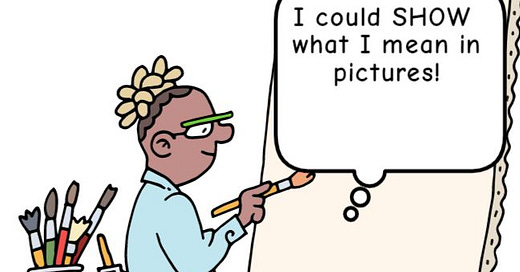



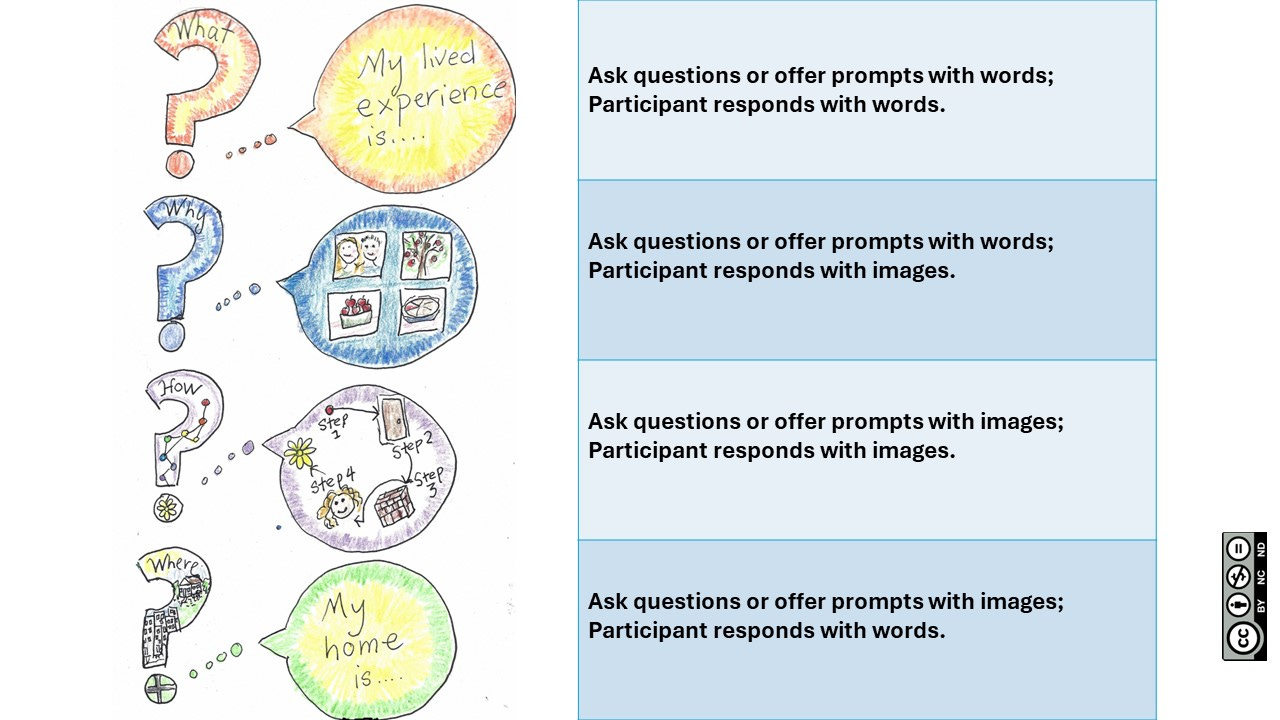
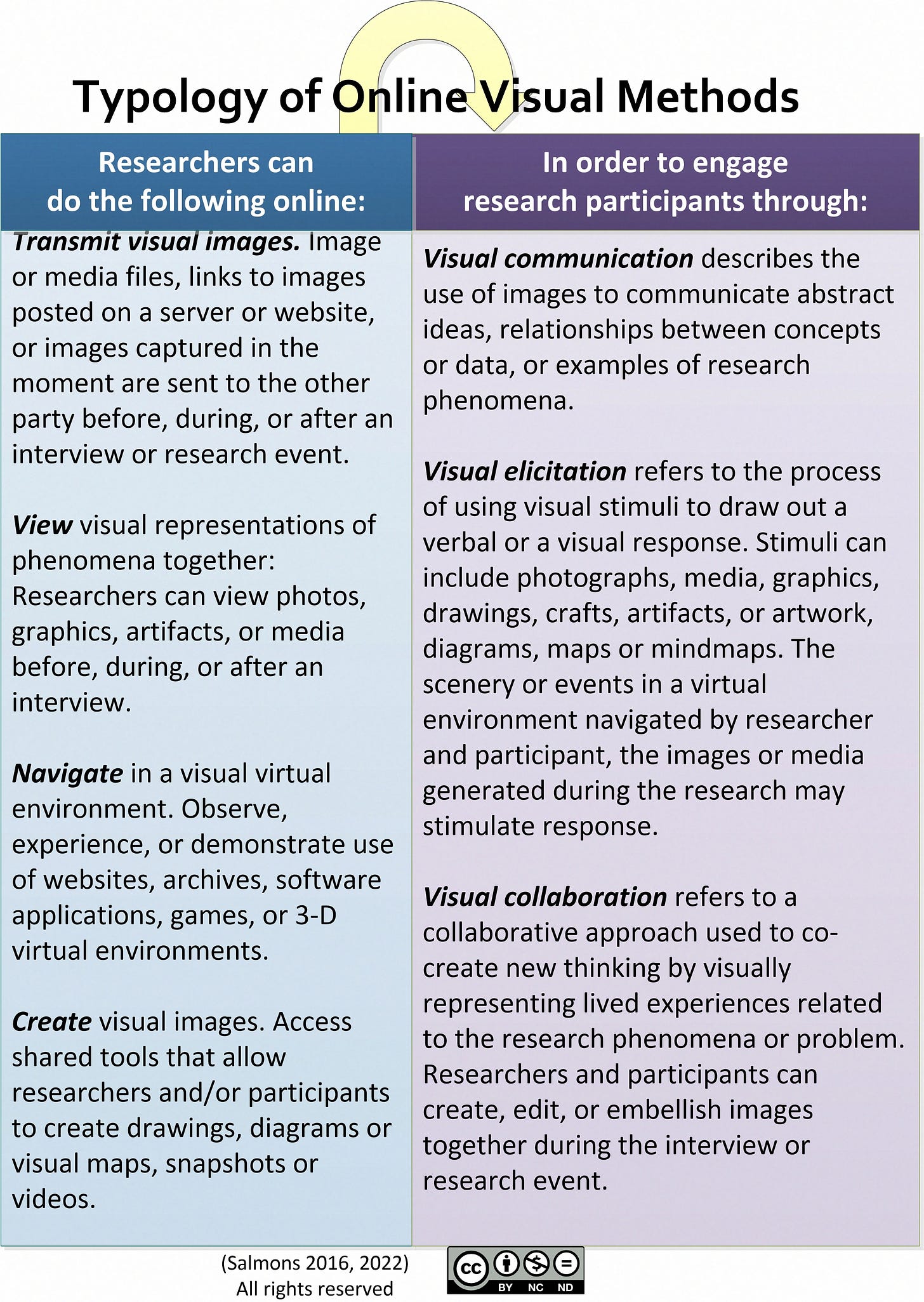
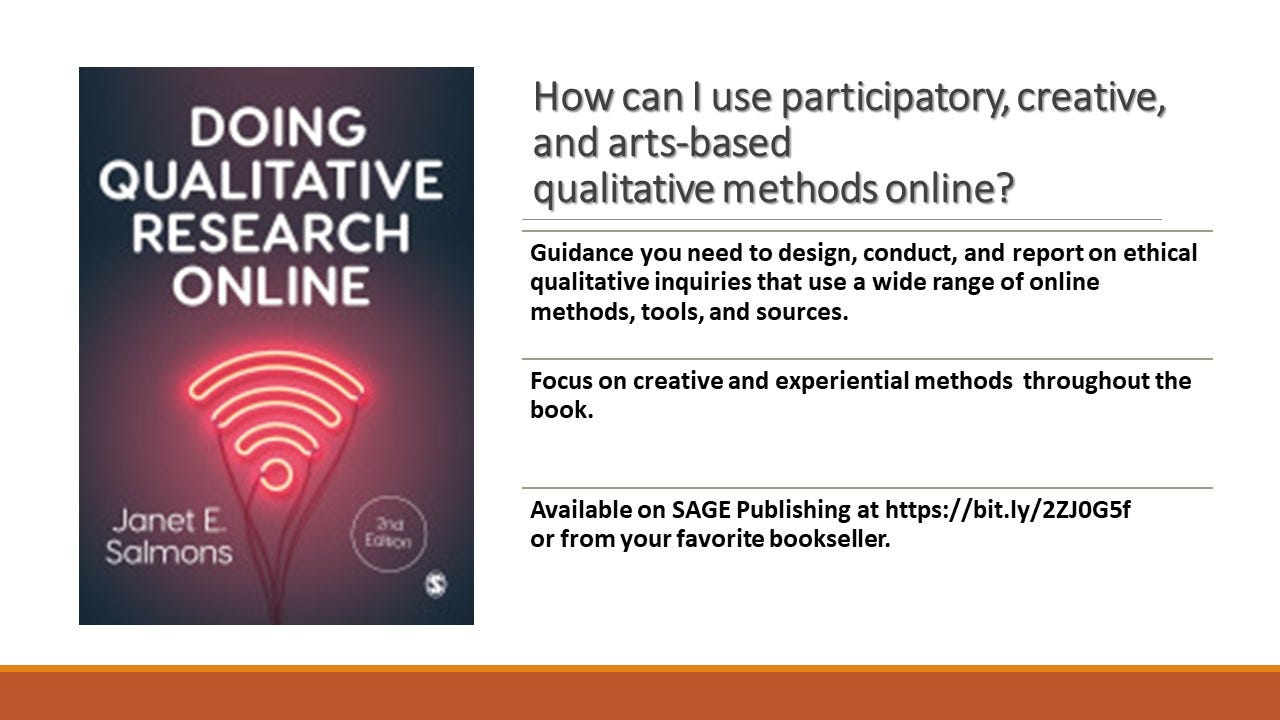

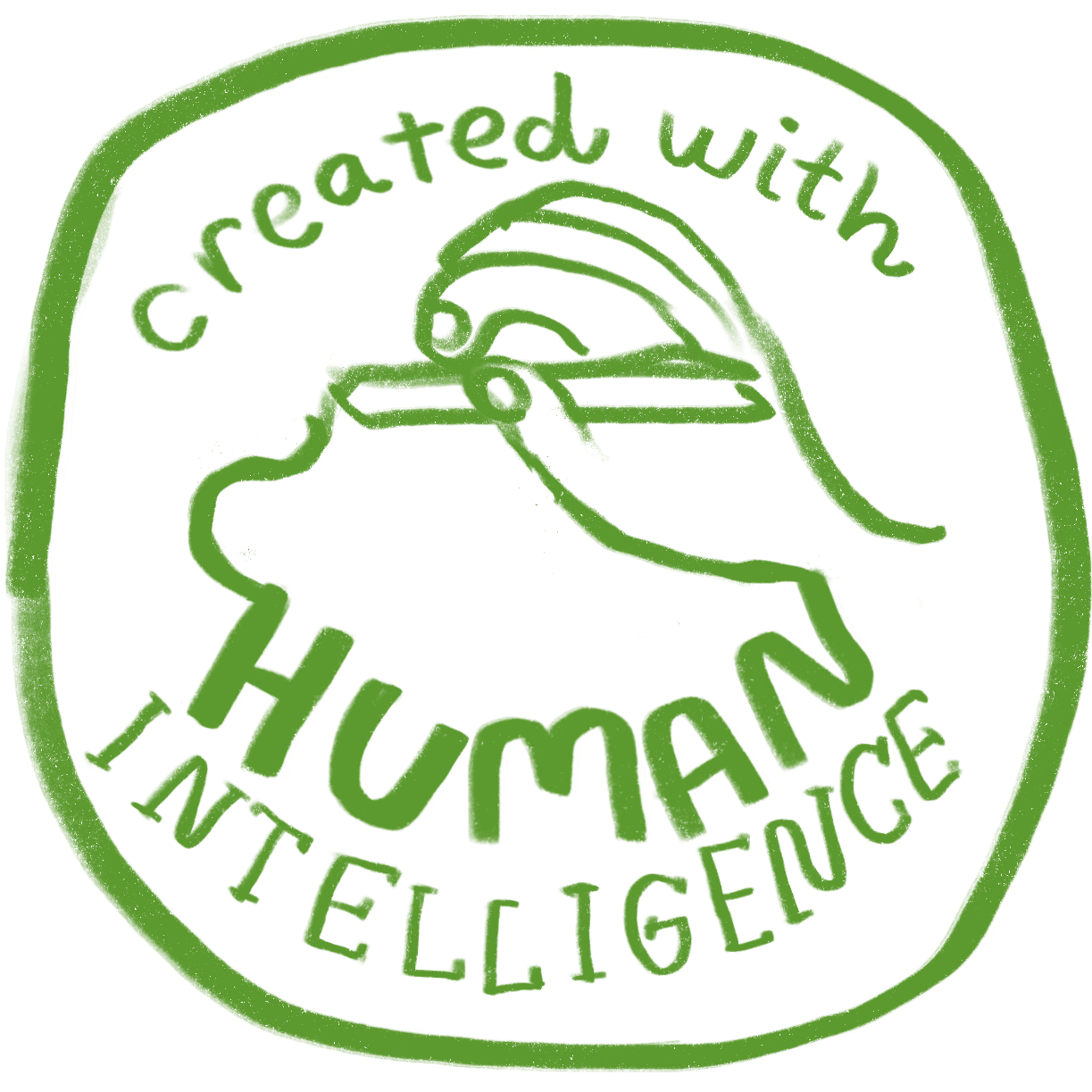
Thank you for the badge credit! ❤️